Zinnias are a popular mainstay of the annual flower garden, grown from seed to fill the flowerbeds with vibrant color. Blooms sit atop tall stalks perfect for cutting, or dwarf plants are suited to growing in containers.
Though they’ll do well in gardens across a huge swath of the US (and the globe!), flowering in the summertime in USDA Hardiness Zones 3 to 10 and beyond, some types of zinnias do better than others in dry heat, as they are tolerant of drought, while others can withstand the cool damp at the start or end of the growing season in certain regions. And disease resistance is an added feature of some types.
There are so many gorgeous varieties to choose from, with new ones being introduced to the market each year.
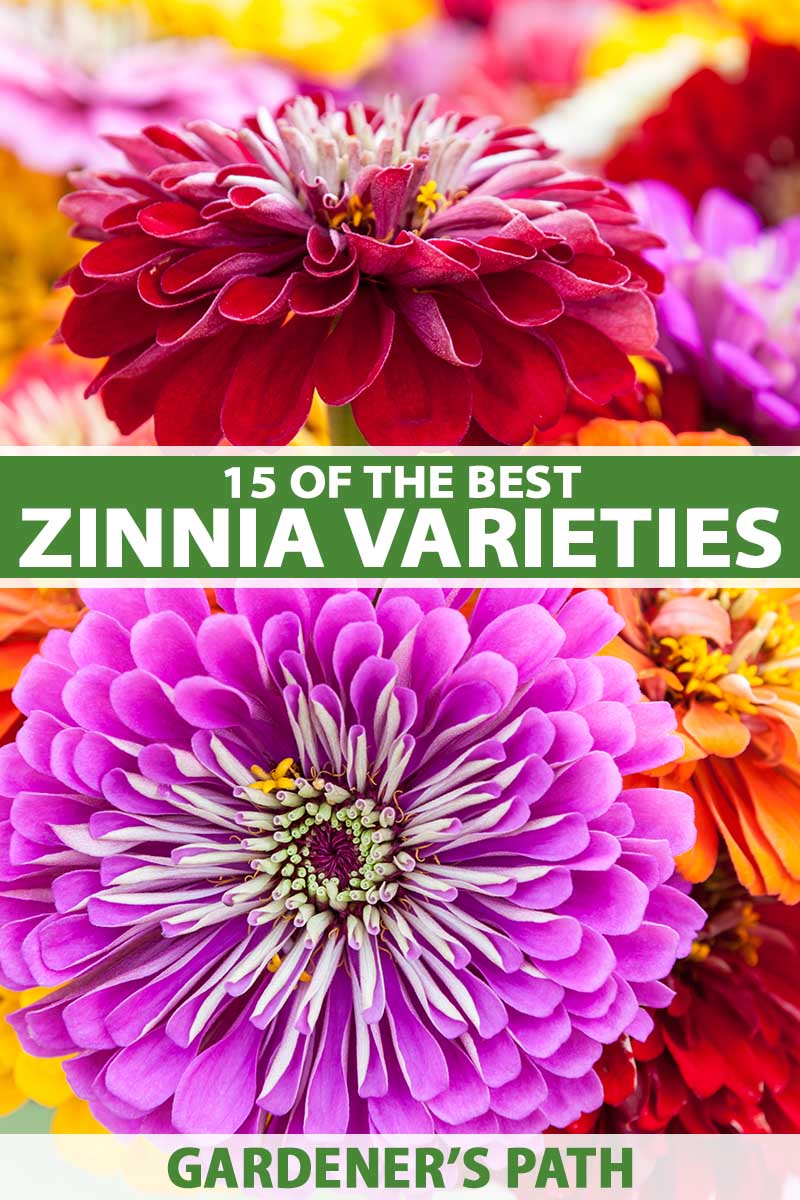
We link to vendors to help you find relevant products. If you buy from one of our links, we may earn a commission.
If you’re looking for the best of the best but you’re not sure which to pick, peruse this carefully curated roundup of 15 of our favorite zinnia cultivars to grow in the home garden.
15 of the Best Zinnia Varieties
1. Big Red
They might not taste like cinnamon (though they are in fact edible), but ‘Big Red’ flowers offer a visual experience that I’d argue is akin to that burst of spicy flavor that I remember from the chewing gum of the same name.
As advertised, this Zinnia elegans cultivar is known for its big, six-inch scarlet blossoms. These bloom quickly, in just 35 days after germination under ideal conditions. And for added interest, the flowers fade to deep orange with time.
Tall 36-inch stems support the blossoms, and plants have a spread of 10 to 12 inches. This dahlia-flowered type is packed with layers of petals.
Seeds are available from Burpee.
2. Cactus Flowered Mix
Narrow, quill-like, and slightly curved petals are a standout feature of the “cactus flowered” type of zinnia, and this mix from Burpee does not disappoint.
With blooms in various shades of scarlet, pink, yellow, orange, and white, this Z. elegans cultivar reaches heights of 30 inches with a spread of 12 to 18 inches. Expect the flowers to continue to put on a show for about 10 weeks.
First introduced to the market back in the 1920s, this variety remains popular to this day both in the garden and as a cut flower.
Seeds are available online from Burpee.
3. California Giant Mix
‘California Giant’ is a standout, and I would be remiss to fail to include it here. Lovers of sunflowers and large arrangements may go for this one, which can reach heights of four feet, producing a riot of flowers five to six inches across in shades of pink, yellow, red, and orange.
Perfect for the backs of beds or children’s gardens, this Z. elegans cultivar takes a little longer to mature than other types, blooming in 75 to 90 days, but it’s worth the wait.
First brought to market by Bodger Seeds in the 1920s, you can find seeds to grow in your own garden from True Leaf Market.
4. Color Crackle
These burgundy and white bicolors are so unique. ‘Color Crackle’ is a Z. haageana cultivar, aka Mexican zinnia, with bold one to two-inch double blooms.
Stems reach a moderate height of 16 to 24 inches, and plants spread 12 to 14 inches.
Resistant to mildew as well as drought, this type can do well in a variety of locations and growing conditions.
Seeds are available from Burpee.
5. Crystal White
Keep things simple with dainty single flowers that are attractive to pollinators as well as human visitors to the garden.
‘White’ is my favorite pick from the Crystal series, a daisy-like bloom with white petals and a yellow center, but you may also enjoy the orange and yellow-petaled options.
These Z. angustifolia plants reach just eight to 10 inches in height with a nine to 12-inch spread, so they’re excellent for growing in containers.
Not only is this variety tolerant of pests and severe summer weather, it also holds its own against powdery mildew and other common diseases that may affect other varieties.
Gardeners even like to grow this type in pots indoors, to bring some much-needed color inside!
Seeds are available from True Leaf Market.
6. Dahlia Flowered Mix
If you’re a fan of dahlias but you’re hesitant to commit to putting in the work required to preserve their health through the winter each year, this may be the perfect zinnia for you.
This heirloom type, a variety of Z. elegans developed in 1919, produces blooms packed with petals that curve downward slightly around the perimeter, on long 40-inch stems. And the flowers themselves are impressively large, about four to five inches in diameter.
Seeds in a mix of colors including yellow, white, red, orange, and pink are available from Eden Brothers in a variety of package sizes.
7. Double Zahara Yellow
Fans of sunny blossoms will love ‘Double Zahara Yellow.’ Large double, globe-type blossoms in bright yellow are about two and a half inches across, and grow on stems about 16 to 20 inches in height, with a similar spread.
A hybrid cross of Z. elegans and Z. angustifolia also known as Z. marylandica, this disease resistant cultivar tolerates drought, and makes a lovely cut flower as well.
Seeds are available from Burpee.
The Zahara series also offers cultivars in red, rose, orange, and white, as well as a pretty salmon color that’s available from Burpee as well.
8. Envy
Though green flowers aren’t for everyone, those who covet them will be delighted to find ‘Envy,’ an heirloom variety of Z. elegans with bright green petals on flowers about three to four inches across, and yellow centers.
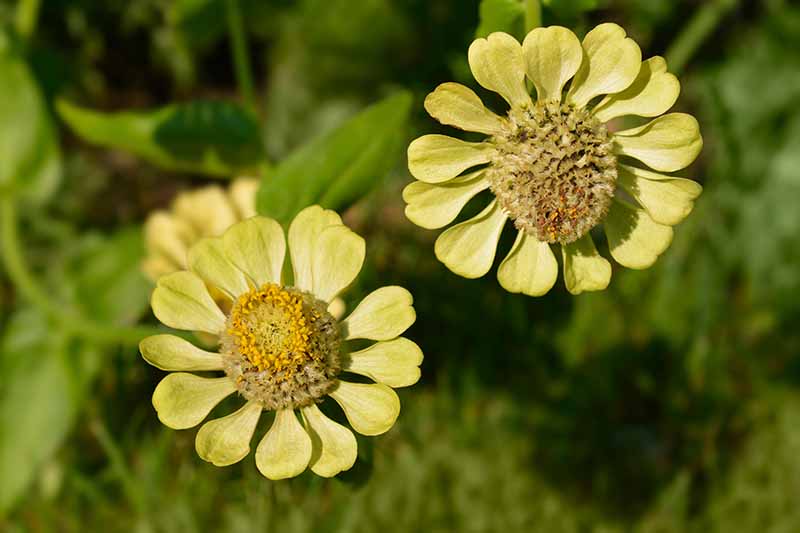
Plants reach heights of 30 to 40 inches, with a spread of about a foot.
Seeds are available from Botanical Interests.
9. Peppermint Stick
Fans of stripes and speckles will love ‘Peppermint Stick,’ a colorful mix featuring flowers streaked with red and white as well as combos of pink, scarlet, crimson, orange, and yellow in various shades as well.
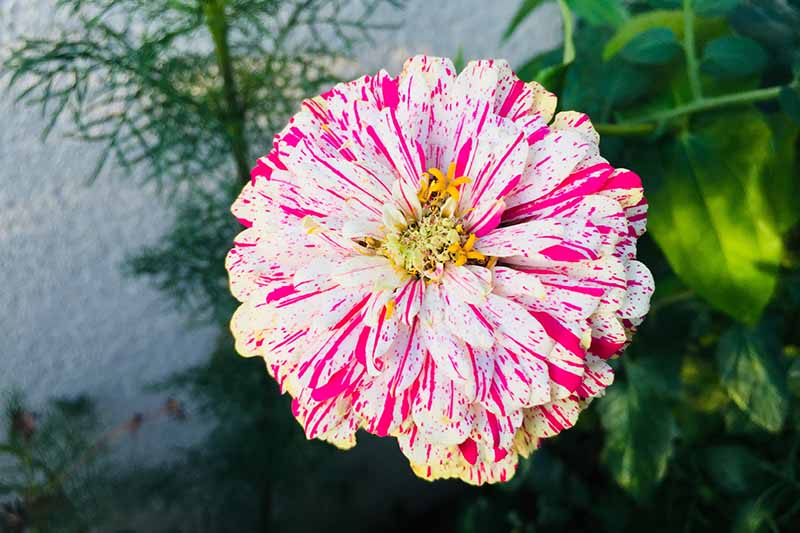
No two flowers are exactly alike, adding a sense of whimsy to garden beds and arrangements. This cultivar of Z. elegans reaches 24 to 36 inches tall, and blooms are two to four inches across.
Find seeds at Botanical Interests.
10. Profusion Cherry
An All-America Selections gold medalist in the flower category in 1999, and a Fleuroselect Gold Medal and Novelty Award winner in the same year, ‘Cherry’ is a Z. elegans x angustifolia hybrid that offers sweet simplicity, and vibrant color.
Cherry red single blooms with yellow centers are about two and a half inches across, and grow on 12 to 18-inch stems. Plants spread 12 to 18 inches wide.
From the Profusion series, ‘Cherry’ keeps company with a large selection of other cultivars for you to choose from if a different color or bloom type is more your jam.
Pick from ‘Coral Pink,’ ‘Deep Apricot,’ ‘Fire,’ ‘Orange,’ ‘White,’ ‘Yellow,’ ‘Double Hot Cherry,’ ‘Double Fire,’ ‘Double Gold,’ ‘Double Salmon Deep,’ Double White,’ ‘Double Yellow,’ or a mix.
Seeds are available from True Leaf Market.
11. Queeny Lime Orange
A newer Z. elegans variety, All-America Selections winner in 2018, and a Fleuroselect Gold Medal winner, ‘Queeny Lime Orange’ was a must-grow from the moment it came onto the market.
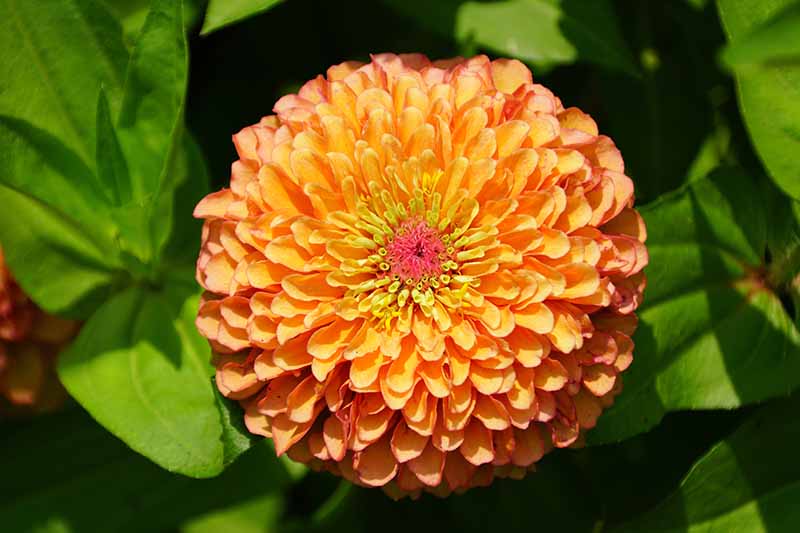
With unique tricolor flowers that grow to be the largest and most and vibrant in full sun conditions, you will adore the big and extraordinarily colorful blossoms in shades that can only be described as “rainbow sherbet-esque.”
Tall plants can reach 30 to 40 inches in height, making this an excellent cut flower, and the coral, peach, and lime flowers grow to be about three inches across.
Seeds are available from Botanical Interests.
12. State Fair Mix
Whether or not you actually choose to go to the state fair this summer is up to you, but you can bring the festivities home with the ‘State Fair’ mix, a riot of color in bold shades of orange, yellow, gold, rose, rust, lavender, and purple.
Fully double Z. elegans flowers grow to an impressive five to six inches across, on long 30 to 36-inch stems. Under ideal conditions, these plants can sometimes reach sky-high heights of 48 inches, so plan accordingly!
Plants have a spread of 12 to 18 inches, and you can expect blooms within 60 to 80 days after germination.
This tetraploid mix is known for its tall stature as well as its disease resistance, and it can hold its own against powdery mildew and Alternaria.
Seeds are available from True Leaf Market.
13. Swizzle Ivory and Cherry
Fans of cherry vanilla ice cream and Fourth of July fireworks might enjoy the starburst effect of ‘Ivory and Cherry,’ an impressive dwarf Z. elegans variety from the Swizzle series with big, four-inch, semi-double blooms.
Plants reach just ten to 12 inches tall, with a six to eight-inch spread. Give this one a try in a container on the deck or patio!
Bred at Kansas State University to thrive in a prairie climate while putting on a beautiful show of flowers throughout the season, it’s great for locations that often experience drought and hot weather in the summertime. And it’s also available in a scarlet and yellow combo.
Note that this type is best for growers in Zones 6 to 11, and it is susceptible to powdery mildew. Gardeners with cool and wet summers should probably give a different variety a try.
Find seeds at True Leaf Market.
14. Zinderella Lilac
If fluffy, pompom style flowers are your thing, you’ll love ‘Zinderella Lilac,’ a pastel pink and purple fully double and semi-double crested cultivar of Z. scabiosa.
A winner of the Fleuroselect Novelty award, plants reach a height of 25 to 30 inches with a spread of 18 to 20 inches, and produce flowers that are two to two and a half inches across.
Dark centers add to their visual intrigue in cut arrangements as well as in the garden, and plants will continue to put on a show of flowers for about 12 weeks, from June to September.
Zinderellas are a newer variety that’s rapidly gaining popularity, and ‘Lilac’ seeds are available from Burpee.
Not keen on pale purple? Burpee’s got you covered with a different option, ‘Zinderella Peach.’
15. Zowie Yellow Flame
Reminiscent of the popular summertime bloomer gaillardia, Zowie! ‘Yellow Flame’ is a true attention-getter.
Semi-double blooms are scarlet at the base of the petals and orange at the tips, for an impressive bull’s-eye effect.
And as if that wasn’t enough to secure this Z. elegans cultivar’s position as a spectacular option for the garden, the flowers also change color as they age.
An All-America Selections winner in 2006, plants grow 24 to 29 inches in height with a spread of 18 to 24 inches, and they’re perfect for growing in locations with hot summers and dry conditions.
Seeds are available from True Leaf Market.
Fill Your Summertime Garden with Annual Color
Easy enough for kids to grow, with enough varieties out there to last a lifetime, it’s easy to fall in love with zinnias.
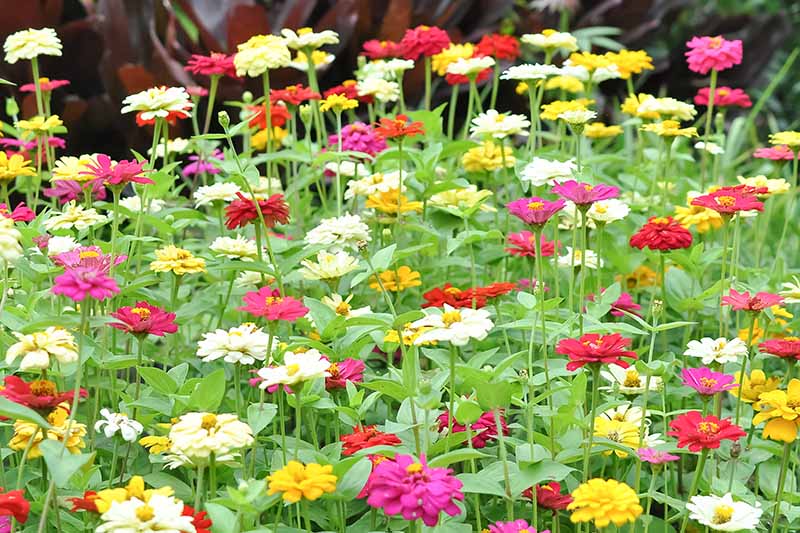
I look forward to adding a few to my garden plan each year, picking out the seeds, and experimenting with new colors and blossom types (as well as old standbys!) to add color and interest, and attract pollinators to my garden spaces as well.
Which varieties will you choose, and where will you plant them? Do you have a favorite that I didn’t include here? Please post your questions and comments below!
And to learn more about growing zinnias in the garden, read these articles next:
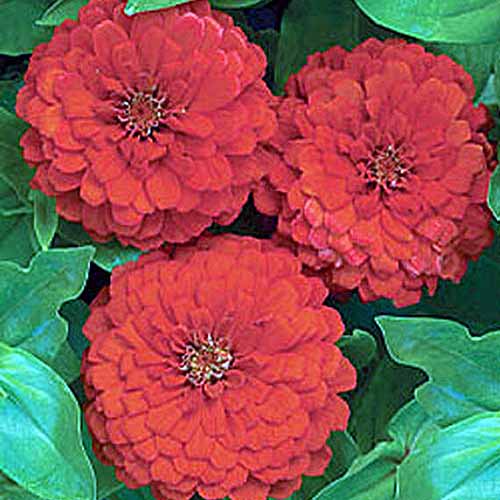

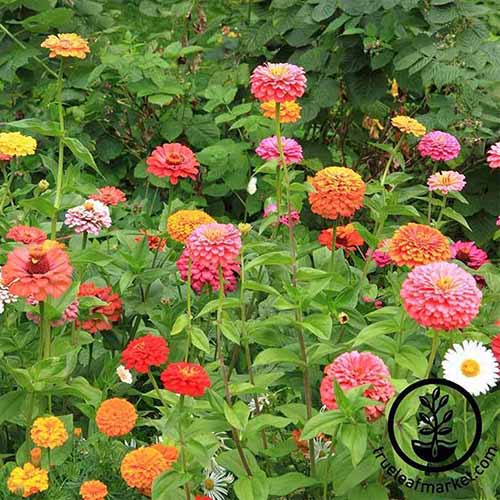
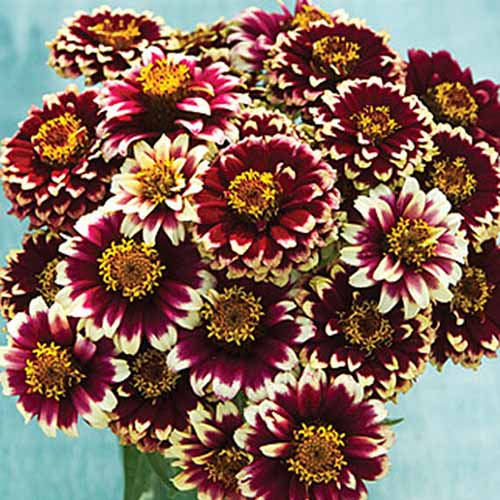
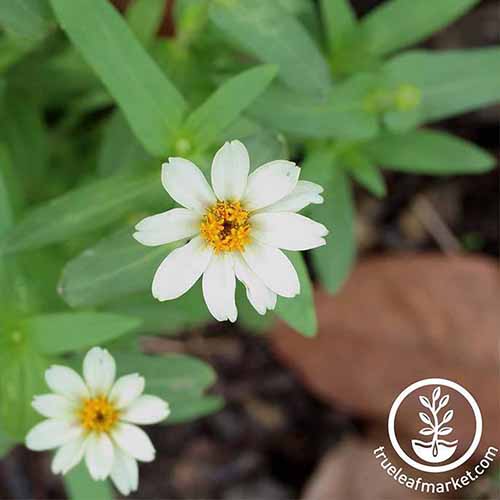
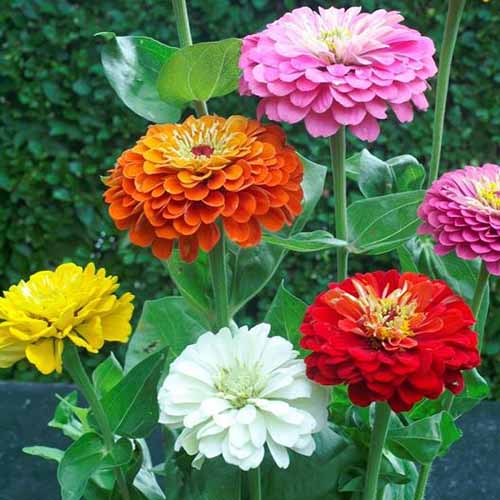

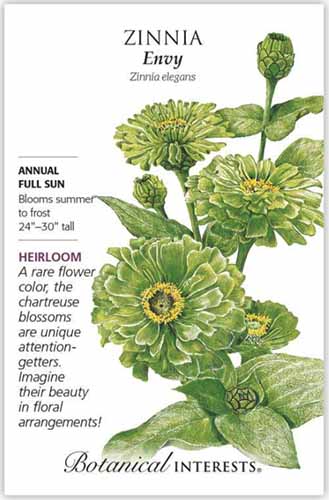

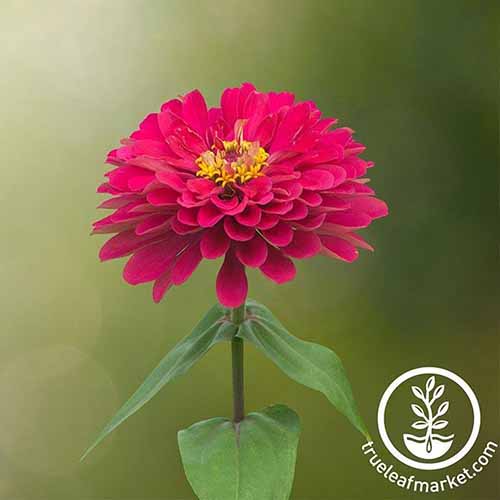
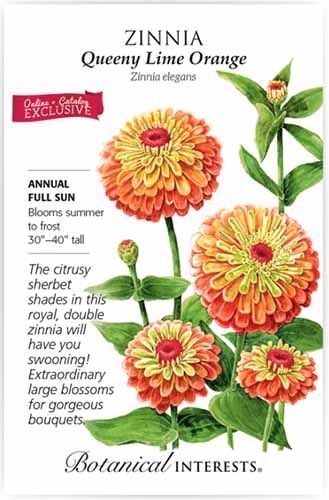
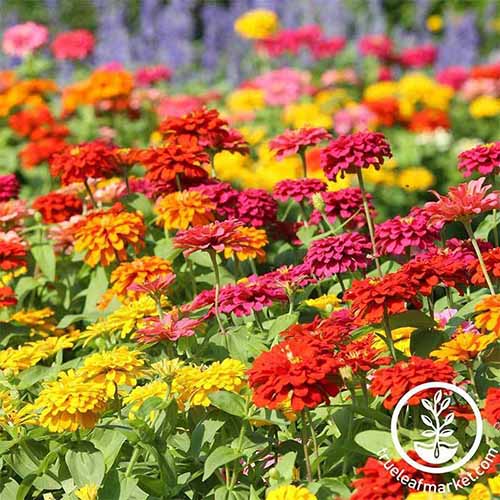
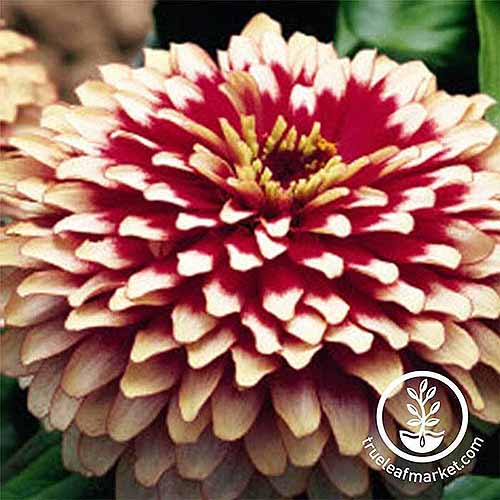
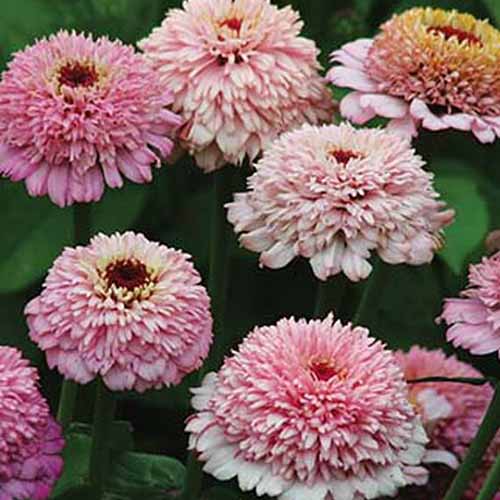
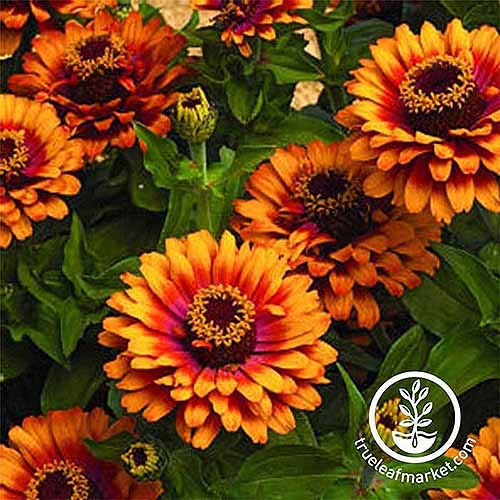
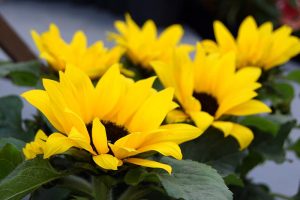
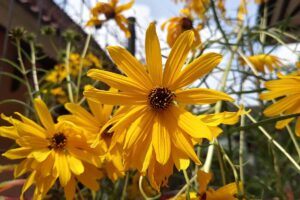

I’m in South Florida so in some ways limited as far as flowers, but on the other hand you can have flowers all year long.
I love zinnias as enjoy the colors but for me the biggest plus is all the butterflies they attract.
Both my daughters live in California and for them zinnias attract hummingbirds. I have never seen a hummingbird here in South Florida.
I plant about 3 or 4 daisy zinnia gardens every summer. And also plant some in pots. They are hardy, easy to care for, require little watering and attract butterflies and birds. I love them. A great summer annual in southern Ohio. I wish I could find some 12-15 inch tall purple zinnias, as I believe the butterflies are most attracted to the purple ones.
Google “zinnia purple prince.” These are my very favorite scenes of all time. You get 3 feet tall Dahlia type perfusions of purple blooms right up until frost. I live in Alabama and had nonstop purple perfusion until November last year! Best of all? Where are all of my state fairs succumbed to mildew, the purple princes were unaffected.
If you want only gigantic purple blooms, nothing can be “purple prince“ but they are expensive seeds! My very favorite zinnias, however— Lilliputs! I’ve bought mixes of Lilliput type zinnias from many sources and I can tell you that ***nothing beats the mix from American seed. Amazingly, the dollar tree carries them and a pack of seeds is $.25! I have paid much more for different mixes— but the ones from the dollar tree, American Seed, are nearly all doubles and triples, dahlia-type, and completely mildew resistant. And 15 years they have never failed me!